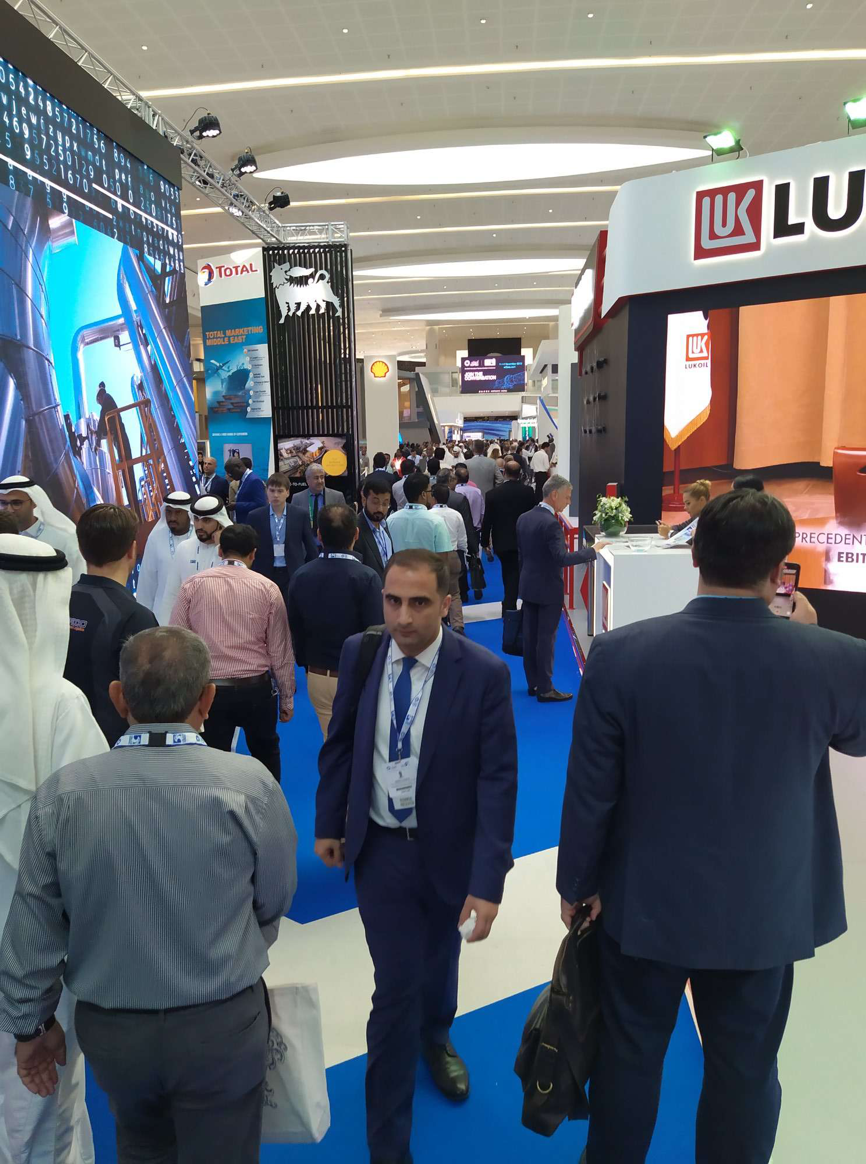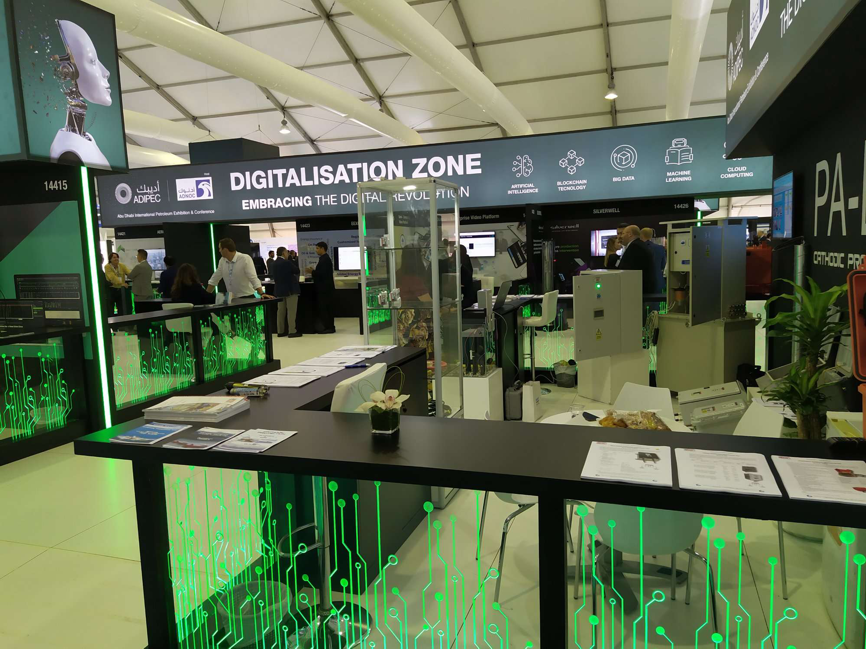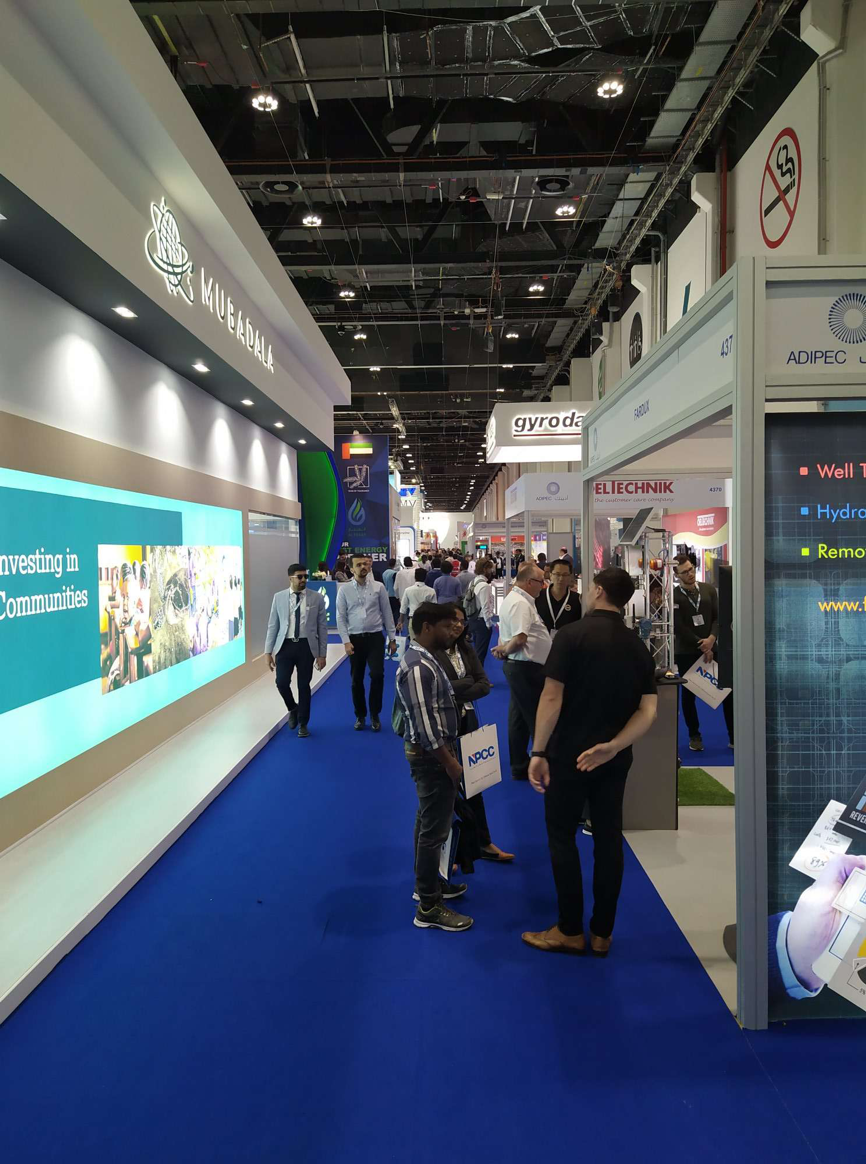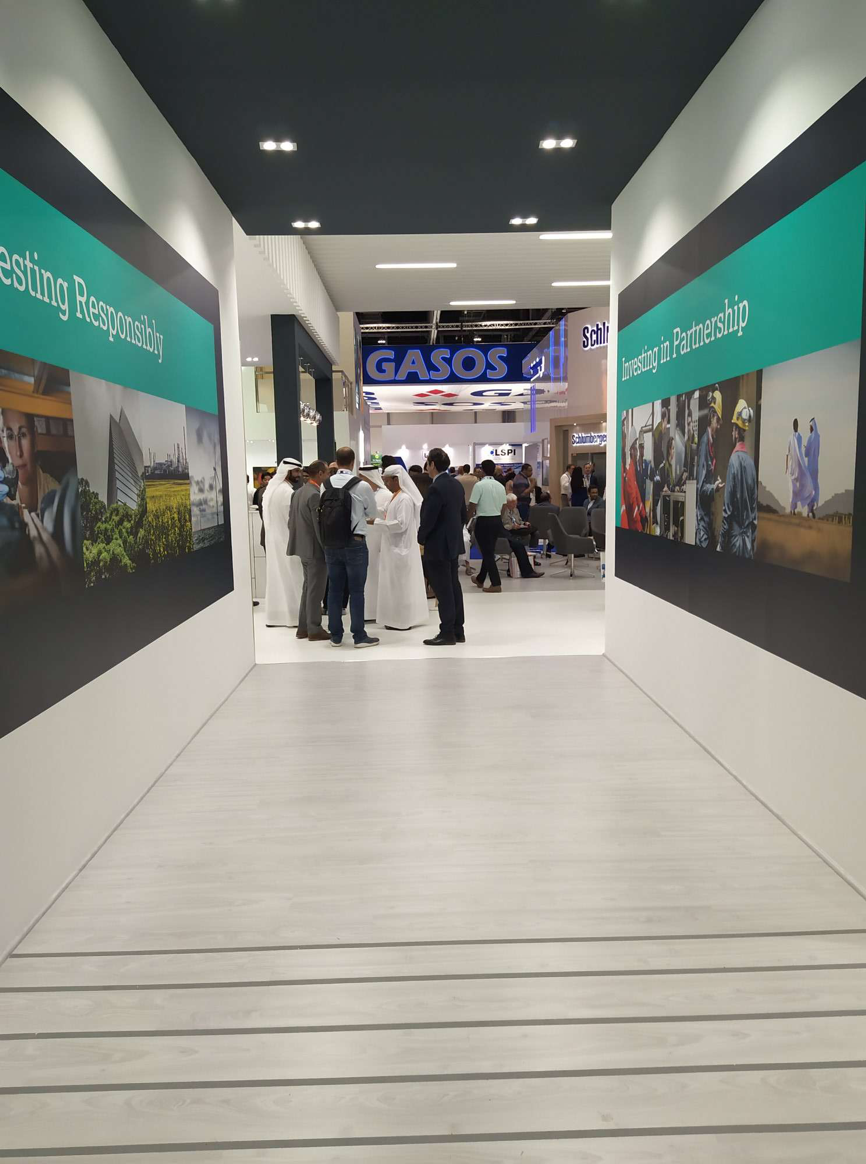Visit to ADIPEC-2019
To put it bluntly, our point of view is more of a vision of the exhibition by field developers and developers of sophisticated software (physics engines in combination with machine learning) for field development. Well, here are the main highlights:

- The number of companies represented in the exhibition is impressive, indeed (about 2,200) – Abu Dhabi hosts a record-setting oil and gas exhibition and conference in terms of its scale for the whole history. For example, the largest industry exhibitions in Moscow gather about 500 companies.
BUT ADIPEC often collects several companies in one booth, that is why the size and the total area of the exhibition are not gigantic. You can walk around the whole exhibition for 1.5-2 days (out of 4 days in total) if you don’t rush anywhere.



- The exhibition represents many oil producers, they sell/purchase oil or offer services of affiliate service companies. Representatives interested in technologies go around the exhibition searching for something new and interesting, and they do not stand in booths.

- Even a small booth gives a great number of new acquaintances with interested professionals (50 to 100 new contacts per day).



- This year the exhibition featured a vast Digitalization Zone for companies turning Industry 4.0 into reality. Unfortunately, from our point of view, the zone was not always occupied by target companies. Some of them were frankly far-fetched and did not even have relevant work experience in oil and gas.



- Some solutions in Digitalization Zone did not seem a revelation. Say, a video camera on workers’ hard hats for the foreman to be able to monitor their work remotely… Or flying drones and all kinds of sensors combined in a single system. Although there were some good solutions: e.g. a young company from Canada offered a program optimizing the distribution of workover teams per wells to the market. A similar solution was implemented in Russia in 2017-2018 by a large oil producer in cooperation with foreigners. Yet the same ideas appear in parallel in different countries and develop simultaneously. This is great.

- It is curious that the MOST IMPORTANT thing for Nest Lab – a problem of poor accuracy of measurements in wells (15-20% of error), a problem of manual falsification of monthly production reports (by adjusting production levels after oil treatment) taking into account concealing “bad” well intervention techniques, as well as horrible results of history matching based on such “data” (with final well-by-well error in models for oil amounting to 100-200% and more, the MAPE – mean average percentage error – parameter) – is also confirmed by reservoir engineers from Middle East, Africa and South-East Asia (Indonesia, Malaysia). THAT IS, in other words, it is a common disaster for everybody. It means that the problem solved by us is common, and we work in the frame of world practice in Russia.



“By reconfirming the whole measurement history using machine learning, we have reduced the error in input data to 5-7% within Nest calculations. We used the latest developments in the sphere of simplified physical models of INSIM type to accelerate the calculations and match history for hundreds and thousands of models in the automatic mode. We also limited the solution domain in simplified physical models using machine learning, and now we are preparing a release of the most robotic product in the sphere of oil field development – a second-generation Nest software complex.

Now we have decreased MAPE to 20-40% in real fields, with the best world practices in the area of 80-85%. We know more about oil distribution and mutual impact of wells, as well as reservoir pressure. An error in forecasting new well operating parameters before drilling is in a range of plus-minus 20% with Nest, simple re-setting of the flooding system gives a production growth of 40% and more. We save up to 40% of ineffective expenses for development management.

Now Nest Lab sets itself the most ambitious goal – give an opportunity to use our practices to as many engineers in the world as possible.” – told Mikhail Fokin, Nest Lab Director, after the exhibition.

 Print contacts
Print contacts 